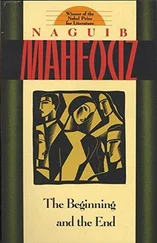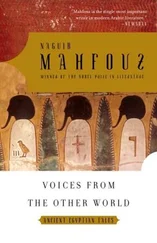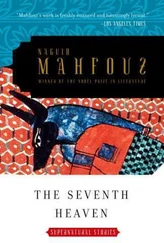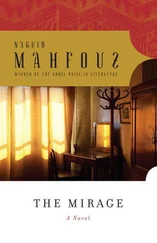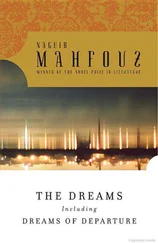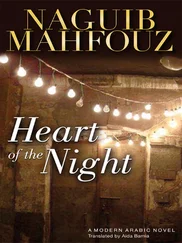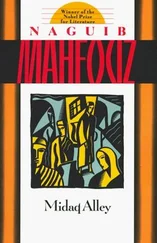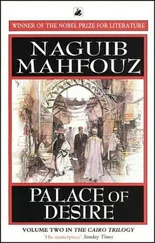Naguib Mahfouz - Before the Throne
Здесь есть возможность читать онлайн «Naguib Mahfouz - Before the Throne» весь текст электронной книги совершенно бесплатно (целиком полную версию без сокращений). В некоторых случаях можно слушать аудио, скачать через торрент в формате fb2 и присутствует краткое содержание. Год выпуска: 2012, Издательство: Anchor, Жанр: Современная проза, на английском языке. Описание произведения, (предисловие) а так же отзывы посетителей доступны на портале библиотеки ЛибКат.
- Название:Before the Throne
- Автор:
- Издательство:Anchor
- Жанр:
- Год:2012
- ISBN:нет данных
- Рейтинг книги:3 / 5. Голосов: 1
-
Избранное:Добавить в избранное
- Отзывы:
-
Ваша оценка:
- 60
- 1
- 2
- 3
- 4
- 5
Before the Throne: краткое содержание, описание и аннотация
Предлагаем к чтению аннотацию, описание, краткое содержание или предисловие (зависит от того, что написал сам автор книги «Before the Throne»). Если вы не нашли необходимую информацию о книге — напишите в комментариях, мы постараемся отыскать её.
Before the Throne
Before the Throne — читать онлайн бесплатно полную книгу (весь текст) целиком
Ниже представлен текст книги, разбитый по страницам. Система сохранения места последней прочитанной страницы, позволяет с удобством читать онлайн бесплатно книгу «Before the Throne», без необходимости каждый раз заново искать на чём Вы остановились. Поставьте закладку, и сможете в любой момент перейти на страницу, на которой закончили чтение.
Интервал:
Закладка:
And in Before the Throne , more striking than even the glittering visual splendor of the supernatural backdrop is Mahfouz’s choice of the Osiris Court as the vehicle for delivering his own historical judgments. God of the afterlife and chief of the tribunal that judges the souls of the deceased, Osiris is one of ancient Egypt’s oldest known deities, his roots sunken and decayed in the mud and clay of the northeastern Delta. An ancient folk belief held that he was an actual — and prodigious — king in Predynastic times (a view still debated by Egyptologists), but the first known image of him dates to the Fifth Dynasty, one of many minor deities grouped around the king, “with a curled beard and divine wig in the manner of traditional ancestral figures.” 11In the Old Kingdom, he was associated with the royal dead only, mainly in the great necropolis of Abydos in Upper Egypt, though gradually, his popularity grew. His nemesis was Seth, who eventually became an Egyptian prototype of Satan, the Evil One. In one of Pharaonic Egypt’s most famous myths, Seth twice attacks Osiris, the second time cutting him up into sixteen pieces and throwing them into the Nile. All the pieces are recovered by his sister — wife, the goddess Isis, except one — his penis. 12That critical lacuna aside, one should note that, to the ancient Egyptians, “the dying of Osiris does not seem to be a wrong thing,” as Herman Te Velde says, “for death is ‘the night of going forth to life.’ ”
Crucial to Before the Throne is the role Osiris plays in the passage of the dead into the next world — or into nonexistence. In the ancient myth, 13Osiris, in the shape of a man wrapped in mummy bandages, bearing the symbols of royal power (the elaborately plumed atef crown on his head, a false beard on his chin, the crook and flail in his hands crossed over his chest), presided. Meanwhile the jackal-headed god of embalming, Anubis, introduced the deceased and weighed his or her heart on a great double-scale against a feather representing Ma‘at , the principle of divine order and justice. If the defendant had committed no grave sins on earth, the heart would balance with the feather — and the deceased would be pronounced “true of voice” (a concept that resonates strongly in Mahfouz’s work) and given the magic spells necessary to enter the underworld, Duat .
But if there was no balance with the feather, the heart was fed to “the devourer,” Ammit, a terrifying female beast with the head of a crocodile, the body of a lion, and the hind legs of a hippo. As all of this transpired, the ibis-headed Thoth, god of writing and magic, supervised and recorded the judgments and reported them to Osiris. (Another representation of Thoth, a baboon, sat atop the scale.) Meanwhile Isis (a radiantly beautiful woman with either a throne — which was her emblem — or a solar disk and horns upon her head), 14her son, the falcon-headed Horus (who introduced and pleaded for each defendant), and other deities looked on.
The Osiris Court, carved and painted in tombs, and depicted on papyrus in the Book of the Dead , is the most vivid and enduring image from old Egyptian beliefs regarding the fate of the individual after death. It has even been found, crudely but beautifully displayed, on the gilded cartonnage covering the chests of Roman-era mummies excavated by Zahi Hawass at the Bahariya Oasis in 1999 (and later). The artisans who made them came from a society that had already forgotten most of the other elements of ancient Egyptian religion — including, apparently, even the knowledge of how to correctly write the sacred (hieroglyphic) script.
Perhaps further proof of the Osiris Court’s persistently haunting imagery is that Mahfouz, who had set aside Pharaonic Egypt as a central setting or theme in his fiction for nearly forty years, then seized upon it as the framework for one of his strangest and most explicitly ideological books. In Before the Throne , subtitled Dialogs with Egypt’s Great from Menes to Anwar Sadat , Mahfouz dramatically presents his views on many of Egypt’s political bosses from the First Dynasty to the current military regime. And he does so by putting words in their mouths as they defend their own days in power before the tribunal of Osiris. In Before the Throne , those whom Mahfouz sees as the greatest leaders of ancient Egyptian civilization, under the aegis of the ancient Egyptian lord of the dead, judge those who followed them, from the unification of the Two Lands through late antiquity and the Middle Ages, right to his own times. This continuum of Egyptian history showcases his essentialist vision of a sort of eternal Egyptian ka (the living person’s undying double who, in the afterlife, receives mortuary offerings for the deceased, thus ensuring their immortality). 15
From pharaohs to pashas, and from prime ministers to presidents, only those who serve that great national ka —according to Mahfouz’s own strict criteria — are worthy of his praise and a seat among the Immortals. The rest are sent to Purgatory (the counterintuitive destiny, in chapter 22, of the youthful king whose tomb’s discovery spurred the young Naguib’s love of ancient Egypt) — or even to Hell (like the hapless governor Nesubenedbed in chapter 32).
That he used an ancient Egyptian mode of judgment (albeit his own version of it) to hold these leaders to account, rather than a more conventional setting speaks loudly of his conviction that Egypt is different and must look to herself for wisdom — as well as offer it to the world. The Immortals even proclaim an Egyptian “ten commandments” in the final chapter. 16
Despite the historical mission behind Before the Throne , some of the characters are seemingly the products of Mahfouz’s mind — and his need to invent voices for a cherished idea. An outstanding example is Abnum, who emerges as the leader of the “rebels of the Age of Darkness” (the First Intermediate Period) in chapter 5, and thereafter throughout the book as the bloody-minded champion of the oppressed. Mahfouz claimed that Abnum, who embodies the right of the common people to rise up against injustice, was a real figure he’d found in his research. 17Yet I have found no trace of him in the available sources that the author likely consulted, while the ‘revolution’ he allegedly led probably never occurred, at least not in the way that Mahfouz portrays it.
Mahfouz also uses terms, both religious and racial, that some readers might find strange. To him, historically, ‘Copt’ means ‘native Egyptian’ (derived from Aegiptos , the name the Greeks gave the country in antiquity), though today it refers to the indigenous Christian minority, who are thought to be the most direct descendants of the ancient Egyptians.
More confusingly, Mahfouz sometimes refers, not to God (in the monotheistic sense), or the gods (in the pantheistic one), but to a being called ‘the God.’ This partly reflects Mahfouz’s knowledge of the ancient Egyptian practice of adopting local divinities as objects of special devotion, and the worship of certain gods such as Amun, Horus, Khnum, Osiris, Ptah, and Ra as deities linked to kingship. For example, Ramesses II (chapter 26) invokes Amun — without naming him — as a patron, protective god when cut off by the Hittites at Kadesh. Moreover, Mahfouz, like many of his fellow Muslims, tended to view the ancient Egyptians as proto-Muslims, who would have regarded each minor god as but a manifestation of a grand single godhead. (In chapter 21, Imhotep even enunciates the kernel of this idea to Akhenaten — whose role as the first known monotheist made him the subject of Mahfouz’s 1985 novel, Akhenaten: Dweller in Truth ). 18Nonetheless, many characters speak of the various gods as actual beings. Above all, Mahfouz employs the conceit of the Osiris Court, with four of the ancient deities very much active in it (though shorn of their famous physical attributes), perhaps — but not necessarily — representing aspects of God. To finesse the theological conundrum this creates, the ancient gods do not render final judgment on defendants from the Christian and Islamic eras, but leave that task to a higher authority.
Читать дальшеИнтервал:
Закладка:
Похожие книги на «Before the Throne»
Представляем Вашему вниманию похожие книги на «Before the Throne» списком для выбора. Мы отобрали схожую по названию и смыслу литературу в надежде предоставить читателям больше вариантов отыскать новые, интересные, ещё непрочитанные произведения.
Обсуждение, отзывы о книге «Before the Throne» и просто собственные мнения читателей. Оставьте ваши комментарии, напишите, что Вы думаете о произведении, его смысле или главных героях. Укажите что конкретно понравилось, а что нет, и почему Вы так считаете.


